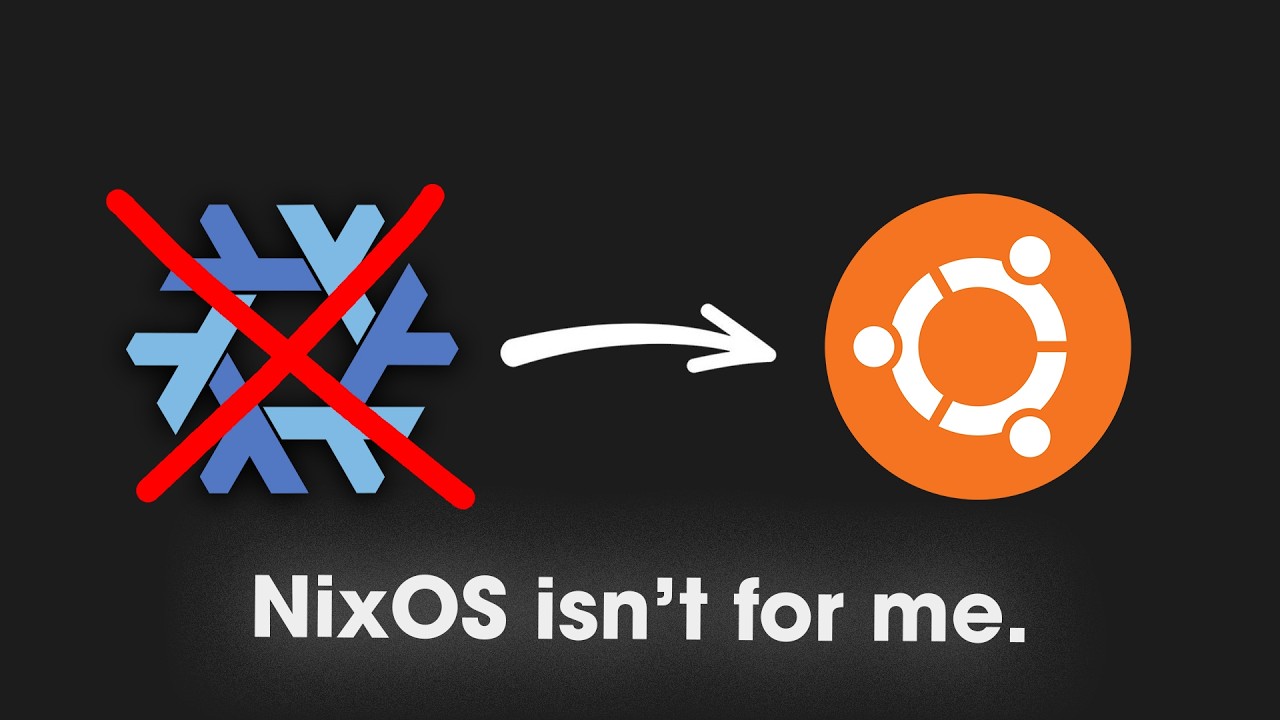The creator shares their journey of switching from NixOS to Ubuntu, highlighting the initial appeal of NixOS’s declarative system but ultimately choosing Ubuntu for its reliability and ease of use, enhanced by the Omacub tool for a customized development environment. They emphasize the importance of balancing customization with productivity and encourage viewers to build foundational skills through resources like Brilliant to better manage complex systems.
The video begins with the creator excitedly setting up a new development environment on a mini PC, choosing to try out NixOS after previously dual-booting Windows and Arch Linux. They installed NixOS with the Plasma desktop but switched to Hyperland, customizing everything from the terminal to the status bar. The initial experience was very positive, with the declarative nature of NixOS allowing them to define their entire system in code, making it easy to roll back changes and maintain a clean, intentional setup. The workflow felt efficient and purposeful, reminiscent of their old Arch setup but with easier recovery from issues.
However, over time, the creator encountered increasing friction with NixOS, especially when trying to keep up with updates for software like JetBrains IDEs, Zed, and other tools. Unlike Windows, where updates were straightforward, NixOS required complex configuration, often involving unstable packages or writing custom flakes. This led to frequent debugging sessions and time-consuming fixes that detracted from actual development work. Despite enjoying tinkering, the creator found themselves forced to fix problems rather than improve their setup by choice, which became frustrating and inefficient.
As a result, the creator gradually stopped using NixOS, eventually wiping the drive and installing Ubuntu instead. They appreciated Ubuntu’s out-of-the-box functionality and reliability, which allowed them to focus on coding without constant interruptions. To avoid a vanilla Ubuntu experience, they discovered Omacub, a tool by DHH that transforms a fresh Ubuntu install into a fully configured, modern web development environment with a single command. Omacub offered customizable themes, tiling window management, and a polished setup that closely matched the creator’s preferences, enabling them to enjoy tinkering again without the frustration of constant fixes.
The creator emphasized that their decision to move away from NixOS was not due to any failure of the operating system itself but rather their current needs and time constraints. They acknowledged NixOS’s strengths and the appeal of its declarative system but expressed a desire for a more plug-and-play experience that still allowed customization without the overhead of constant troubleshooting. They also mentioned the possibility of revisiting Arch Linux in the future, especially with upcoming projects like Omari, which aims to bring a similar streamlined experience to Arch.
In closing, the creator encouraged viewers to subscribe for upcoming videos detailing their Ubuntu setup and thanked the sponsor, Brilliant, highlighting the importance of foundational computer science skills in managing complex systems like NixOS or Ubuntu. They recommended Brilliant’s interactive learning platform as a valuable resource for developers to build problem-solving skills that translate directly to real-world coding and system configuration challenges. Overall, the video is a candid reflection on balancing customization, stability, and productivity in a developer’s workflow.
